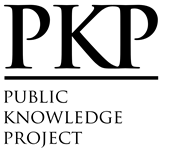Risk Factors and Resilience: The Case of Second Cycle Primary School Children in Wolaita Zone, Ethiopia
Abstract
Though some studies have examined risk factors, protective factors and resilience among children by foreign researchers, no study as yet has been documented with regard to the above concerns in Wolaita community children. The major objectives of this study were examining variables which put children at risks and protective factors that help to buffer against risks and stressors in order to foster resilience among second cycle primary school children. With this regard, the study assessed 369 boys and girls in grades seven and eight. The independent t-test and ANOVA analysis indicated no statistically significant differences and effect of gender among boys and girls concerning vulnerability to risk factors and their success stories with regard to resilience respectively. The Pearson’s r computation showed positive significant relationship between parental educational status and overall resilience among other background variables. Moreover, the research yielded positive significant relationships among resilience components and overall resilience. Age of respondents found to have significant effect on their hardiness and resourcefulness among other resilience components and also the presence of siblings at home showed significant effect on children’s resourcefulness. Further ANOVA analysis showed that parental educational and occupational statuses’ significant effect on children’s hardiness, purpose, overall resilience and hardiness, resourcefulness and overall resilience respectively. Lastly, regression analysis manifested that age of children and parental educational status found to be significant predictors of child resilience and vulnerability to risk factors. Among protective variables included in the study; parents, family, teachers and schools were found to be strong predictors of child resilience. The important implication of this research finding is while the research on risk and protective factors is important to guide practice and the way interventions are provided, always all the stakeholders should remember that risk, protection and resilience will vary depending on the individual child, family and their unique situation. What is a risk or a protective factor for one child will not necessarily be for the other.
Full Text:
PDFDOI: https://doi.org/10.5296/jsss.v1i2.5920
Refbacks
- There are currently no refbacks.
Copyright (c) 2014 Mebratu Belete Beka, Eshetu Genemo Daga, Ejigu Demeke Doboro, Tesfatsion Dominiko

This work is licensed under a Creative Commons Attribution 4.0 International License.
Journal of Social Science Studies ISSN 2329-9150
Copyright © Macrothink Institute
To make sure that you can receive messages from us, please add the 'macrothink.org' domain to your e-mail 'safe list'. If you do not receive e-mail in your 'inbox', check your 'bulk mail' or 'junk mail' folders. If you have any questions, please contact: jsss@macrothink.org
-----------------------------------------------------------------------------
